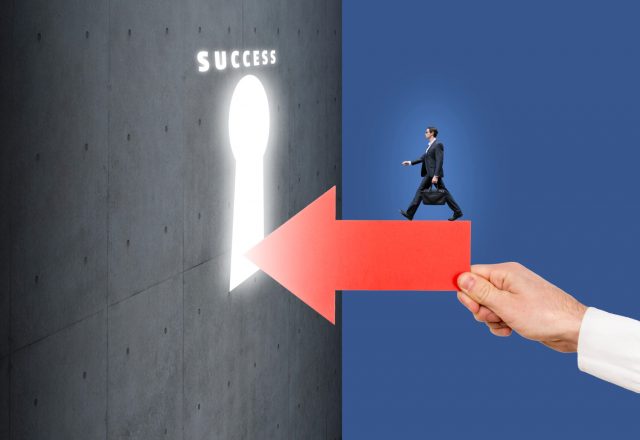In today’s fast-paced digital landscape, where user experience reigns supreme, selecting the perfect UI/UX design company is akin to picking the architect for your dream home. It’s a decision that can shape the success and impact of your digital projects in profound ways. Whether you’re embarking on a web app development, a mobile app overhaul, or a website redesign, choosing the right UI/UX design company in the USA is a pivotal step that requires careful consideration and strategy.
This blog is your compass in the expansive sea of UI/UX design options. It will guide you through the process of making an informed decision that not only meets but exceeds your design expectations. By the end of this journey, you’ll possess the knowledge and confidence needed to partner with a UI/UX design company that can transform your digital visions into captivating and user-centric realities. So, let’s embark on this voyage to uncover the keys to selecting the ideal UI/UX design partner in the ever-evolving landscape of the USA’s digital design industry.
Define Your Needs and Goals
Before embarking on the quest to find the perfect UI/UX design company in the USA, it’s essential to take a step back and define your project’s needs and goals. This initial stage is crucial in ensuring that you’re on the right path to selecting a company that aligns with your vision.
Project Scope:
Begin by outlining the scope of your project. Determine whether you need a complete design overhaul or a specific aspect of your user interface improved. Understanding the size and complexity of your project will help you narrow down your search for design companies that specialize in similar undertakings.Target Audience:
Consider your target audience and their preferences. Different user demographics may require distinct design approaches. Ensure that the design company you choose has experience in catering to the needs and expectations of your intended users.Objectives:
Clearly articulate your project objectives. Are you aiming to increase user engagement, boost conversions, or enhance overall user satisfaction? Knowing your primary goals will guide the selection process as you seek a company with a track record of achieving similar outcomes.Budget:
Establish a budget for your UI/UX design project. Having a defined budget range will help you identify design companies that can work within your financial constraints while still delivering quality results.Timeline:
Determine your project timeline and any specific deadlines. Some design companies may have availability constraints or offer different turnaround times. Ensure that your chosen company can accommodate your project schedule.
By thoroughly defining your needs and goals upfront, you’ll have a clear roadmap for the selection process. This clarity will enable you to communicate effectively with potential UI/UX design companies, increasing the likelihood of finding the perfect match for your project.
Research UI/UX Design Companies

Researching UI/UX design companies in the USA is a critical step in finding the right partner for your project. To begin, conduct a comprehensive online search using search engines, professional networks, and industry-specific platforms. Look for companies that consistently appear in search results, as this could indicate their prominence and online reputation. Once you have a list of potential candidates, delve into their portfolios. Scrutinize their past projects, focusing on those that align closely with your industry, project complexity, and objectives. Pay attention to design aesthetics, usability, and the user-centric approach evident in their work.
Another valuable aspect of your research involves reading client testimonials and examining case studies. These resources offer insights into a company’s reliability, communication skills, and project management abilities. Positive feedback and successful project stories can instill confidence in a design company’s capacity to deliver outstanding user experiences. Additionally, consider any industry awards, certifications, or recognitions the design company has received. These accolades often reflect a commitment to excellence and specialized knowledge within the field. Evaluating the expertise and experience of the company’s design team, initiating communication to gauge responsiveness, and seeking references from previous clients are further steps in your research process. Lastly, take into account the company’s location and organizational culture, as these factors can influence collaboration and project outcomes.
Evaluate Portfolios and Case Studies
One of the most telling aspects of a UI/UX design company’s capabilities lies in its portfolio and case studies. These resources serve as windows into their past work, demonstrating their expertise and creativity. When evaluating portfolios, look for diversity in project types, industries, and design styles. A company with a broad range of experience is better equipped to adapt to the unique requirements of your project. Pay close attention to the quality of the designs, user interfaces, and user experiences presented. A strong portfolio should showcase not just visually appealing designs but also designs that prioritize user-centered principles, seamless navigation, and clear functionality.
Case studies offer a deeper dive into how a design company approaches projects. They provide insight into the design process, problem-solving abilities, and the impact of their work on the client’s objectives. While reviewing case studies, assess how the company identifies and addresses specific design challenges. Look for evidence of their ability to conduct user research, prototype solutions, and refine designs based on user feedback. Evaluate the outcomes of the projects, considering metrics like increased user engagement, improved conversion rates, or enhanced brand recognition. A well-documented case study should reveal a comprehensive understanding of the project’s goals, the design strategy employed, and the tangible results achieved. By thoroughly evaluating portfolios and case studies, you can gain confidence in a UI/UX design company’s proficiency and determine if their design approach aligns with your project’s vision and objectives. This analysis will guide you toward selecting the right partner for your UI/UX design needs in the USA.
What to Look for in a UI/UX Design Portfolio
Let’s explore the essential elements to consider when scrutinizing a UI/UX design portfolio to ensure that you make an informed decision that aligns with your project goals and needs
Diverse Project Types:
A strong portfolio should showcase a range of project types. Look for evidence of versatility in design, such as mobile apps, websites, software interfaces, and e-commerce platforms. Diverse project experience indicates the design company’s ability to adapt its skills to various design challenges. For instance, if you’re seeking a design firm for a mobile app, a portfolio that includes successful app designs from different industries can demonstrate their capability to handle your project effectively.Industry Relevance:
Consider whether the design company’s portfolio includes projects relevant to your industry. While design principles are universal, understanding industry-specific needs and user behaviors can be a significant advantage. For instance, if you’re in the healthcare sector, a design company with prior healthcare-related projects might already be familiar with regulatory requirements and user expectations in that industry.User-Centered Design:
Examine the portfolio to ensure it emphasizes user-centered design principles. Effective UI/UX design begins with a deep understanding of the end user. Look for projects where the company conducted user research, created user personas, and used this data to inform their designs. User-centric portfolios often result in interfaces that are intuitive and user-friendly.Problem-Solving Skills:
Assess the portfolio for examples of problem-solving. A strong design company should be adept at identifying design challenges and coming up with creative solutions. This might be evident in case studies that outline specific problems faced during a project and how the company resolved them. The ability to overcome obstacles and achieve positive outcomes is a valuable trait.Visual Consistency:
Visual consistency is essential for a cohesive user experience. In the portfolio, analyze elements like typography, color schemes, and iconography across different projects. A design company that maintains consistency while tailoring designs to specific project requirements shows attention to detail and a commitment to a unified brand or user interface.Usability and Accessibility:
Prioritizing usability and accessibility is paramount in modern design. Review the portfolio for designs that demonstrate a focus on making interfaces intuitive and accessible to all users, including those with disabilities. This might involve compliance with accessibility standards like WCAG (Web Content Accessibility Guidelines) and the use of user testing to refine designs for usability.Effective Communication:
A well-presented portfolio communicates not only the visual aspects of a project but also the project’s objectives and the design company’s role in achieving them. Clear and concise case studies or project descriptions can give you insights into the design process, the company’s problem-solving approach, and how they collaborated with clients to meet project goals.Client Testimonials and Results:
Testimonials from satisfied clients and measurable results are strong indicators of a design company’s effectiveness and professionalism. Look for projects where the design company has not only delivered appealing designs but also improved key performance metrics, such as user engagement, conversion rates, or revenue. Positive feedback from past clients can provide confidence in their ability to deliver results.
By considering these factors in a UI/UX design portfolio, you can make an informed decision when selecting a design company that aligns with your project’s goals and requirements in the USA.
Questions to Ask Potential UI/UX Design Companies

When you’re in the process of choosing the right UI/UX design company in the USA, asking the right questions can be instrumental in making a well-informed decision. Here are some key questions to pose to potential UI/UX design firms:
Can You Share Examples of Projects Similar to Mine?
- Start by requesting case studies or examples of projects that align with your industry or project type. This helps you gauge the company’s experience and expertise in handling projects similar to yours.
What’s Your Design Process?
- Understanding the design process is crucial. Ask about their approach to user research, wireframing, prototyping, and usability testing. A well-defined process is a sign of an organized and professional team.
How Do You Incorporate User Feedback?
- User-centered design is essential. Inquire about their methods for gathering and incorporating user feedback during the design process. This ensures that the final product resonates with your target audience.
What’s Your Team’s Composition?
- Knowing the team’s structure and size is vital. It helps you understand the breadth of skills available. Ask about their team’s experience, qualifications, and their roles in the design process.
What Tools and Technologies Do You Use?
- Technology is continually evolving in the UI/UX field. Ensure that the company is up-to-date with the latest design tools and technologies, as this can significantly impact the efficiency and quality of the design work.
How Do You Handle Revisions and Scope Changes?
- Flexibility in accommodating changes and revisions is essential. Ask about their policies and processes for handling project scope changes and iterations to ensure that your project remains on track.
Asking these questions not only helps you gather essential information but also gives you a sense of how well the UI/UX design company communicates and collaborates, which is vital for a successful partnership.
Red Flags to Watch Out for When Choosing a UI/UX Design Company
When you’re in the process of selecting a UI/UX design company for your project, it’s essential to be attentive to certain red flags that might indicate potential challenges or mismatches. These warning signs can help you avoid costly mistakes and ensure a successful partnership. Here are the key red flags to watch out for:
Lack of Portfolio Depth:
A limited or shallow portfolio can be a significant red flag. A design company’s portfolio should demonstrate a wide range of projects, reflecting diverse industries, design challenges, and creative solutions. A lack of portfolio depth might indicate a lack of experience or versatility.Minimal User-Centric Focus:
If a design company doesn’t emphasize a user-centered approach, it’s a cause for concern. User research, usability testing, and iterative design based on user feedback should be core elements of their process. A company that downplays these aspects may not prioritize your users’ needs effectively.Inflexibility in Processes:
Some design companies insist on using a fixed design process regardless of the project’s unique requirements. This lack of flexibility can lead to suboptimal results. Look for partners who are willing to adapt their processes to your project’s specific needs.Communication Challenges:
Effective communication is critical throughout a design project. If a company is slow to respond, unclear in its communication, or difficult to reach, it could indicate future collaboration problems. Clear and open communication is essential for a successful partnership.Neglect of Testing and Feedback:
UI/UX design requires ongoing usability testing and refinement based on user feedback. A company that doesn’t prioritize testing or doesn’t show a commitment to iteratively improving designs might deliver subpar results.
Recognizing these red flags during the selection process will help you make an informed decision and choose a UI/UX design company that aligns with your project’s vision and objectives.
How to Get the Most Out of Your Relationship with a UI/UX Design Company
To extract the most value from your collaboration with a UI/UX design company, it’s essential to establish a harmonious working relationship. Start by adopting a collaborative approach, where communication flows openly between your team and the designers. Regular meetings and discussions help ensure that everyone is on the same page, aligning your vision with the design team’s creativity and expertise.
Additionally, involving key stakeholders from various departments can enhance the design process. Their insights, perspectives, and feedback contribute to a well-rounded product. Feedback loops are instrumental in this regard, allowing for continuous refinement and improvement. Encourage your team to provide constructive feedback on design iterations, fostering a dynamic and responsive design process.
Furthermore, user testing should be a central focus. Soliciting feedback from real users and incorporating their insights helps identify usability issues early on and validates design choices. Trust the experts you’ve hired while maintaining an open line of communication for queries or clarifications. Flexibility is also key; be receptive to adjustments and refinements as the project evolves. With a clear channel of communication and a commitment to collaboration, your partnership with a UI/UX design company can yield exceptional results and deliver digital products that truly resonate with your audience.
Conclusion
In conclusion, selecting the right UI/UX design company in the USA is a critical decision that can significantly impact the success of your digital projects. By following the steps outlined in this guide, from defining your needs and goals to thoroughly researching and evaluating potential partners, you can make an informed choice. Always remember to prioritize clear communication, transparency, and a collaborative mindset when working with your chosen design company. Keep an eye out for any red flags and trust your instincts. With the right partnership, you can achieve outstanding design solutions that not only meet your business objectives but also provide exceptional user experiences, setting your brand apart in the competitive digital landscape.
Read more:


















